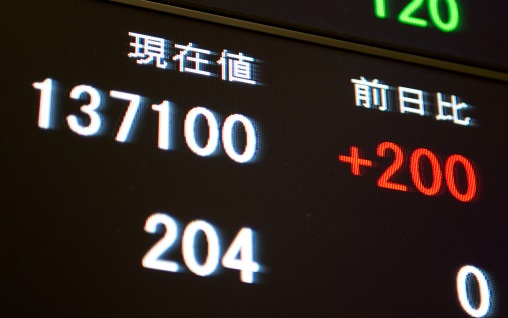The USDJPY pair rose back towards 140.50 in Tokyo morning trade. The only fresh data from Japan was Q3 Gross Domestic Product which was a huge miss.
The Japanese economy unexpectedly shrank 0.3% qoq in Q3 of 2022, missing market consensus of a 0.3% growth and reversing from an upwardly revised 1.1% rise in Q2, preliminary data showed. This was the first GDP contraction since Q3 2021, amid global inflation pressures and a historic slump in the yen.
If you are looking for a reason for the weaker yen on the session so far this’ll work. It adds to the case for no pivot from the Bank of Japan any time soon.
We also had poor data from China. October retail sales, industrial production and investment data all missed. Retail sales contracted y/y. This poor data adds to the case for a COVID-policy pivot out of China, and further support for the property market. We’ve had Chinese authorities moving this way, especially over the weekend. Having said this, high COVID numbers in major city Guangzhou have prompted lockdowns there.
China’s retail trade unexpectedly declined by 0.5% year-on-year in October 2022, shifting from a 2.5% gain in the prior month and pointing to the first drop in five months, as consumption was feeble due to the impact of rising COVID infections and strict restrictions.
Sales fell for most categories: cosmetics (-3.7% vs -3.1% in September), clothing At the same time, trade grew much softer for both automobiles (3.9% vs 14.2%) and oil products (0.9% vs 10.2%). Considering the first ten months of the year, retail sales were up 0.6%.
Also from China today we had a 1 tln yuan maturing medium-term lending facility. This was partially rolled over with a fresh 850 tln yuan MLF. Other long-term loan measures made up the shortfall. The other interesting item in this was the unchanged rate, at 2.75%. This indicates that no change in the one- and five-year Loan Prime Rates (LPR) to be set on Monday, 21 November, by the People’s Bank of China is likely.
Sterling increase after better-than-expected UK jobs data earlier this morning. Jobs have been surprisingly strong despite dire economic forecasts for the UK economy.
The number of payrolled employees in the UK increased by 74,000 in October to a record 29.8 million. There is a slight tick higher in the unemployment rate but overall, this still signals a strong momentum in the UK economy despite major economic headwinds in the works.
Meanwhile, real pay growth continues to be a problem despite the higher estimates seen in weekly earnings. Real pay is estimated to be down 2.6% in the 3 months from July to September, relative to the same period a year ago.




